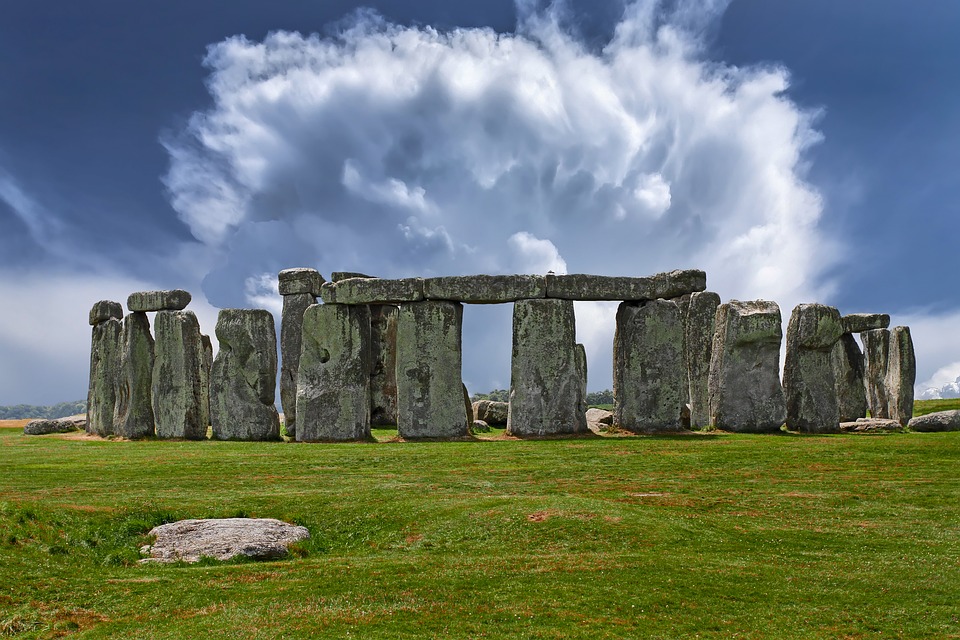Neolithic Architecture
The Neolithic architecture period was from approximately 10,000 to 2,000 BC. The most common materials used during the period included thick timber posts, reeds, clay, stone, and tree trunks. The building techniques varied from culture to culture with central Asia predominately using mud-brick and Europe building structures using the wattle and daub method.
Unlike other architectural periods such as the Romanesque that became famed for the distinct building styles, Neolithic architecture is famed for mostly its megalithic architecture of tombs, temples, and structures. It's also known for being the first to build monoliths - monuments dedicated to religion or social significance. Below we take a look at some of the Neolithic architecture that remains today.
Anta da Cerqueira - Couto de Esteves, Portugal
image © Wiki Commons
The Anta da Cerqueira, or locally known as Casa Moura is located in the parish of Couto de Esteves, Sever do Vouga municipilaty, Aveiro district, Portugal. The dolman structure is estimated to have been built in the 4th millennium. It takes on a polygonal structure which is formed by nine supports that are spaced and support a large slab on top. Is it known as being the most complete structure of its kind within the Aveiro district and has been classified as Property of Public Interest since 1985.
Megalithic Tomb
image © wikimedia commons
Discovered across Europe, Megalithic tombs were mostly used during the Neolithic period, by Neolithic farming communities. The tombs are built of large stone slabs (megaliths), vary in size, and were used for different purposes according to regions. The links between tombs found in Ireland, England, Scotland, and France have not been fully understood.
Skara Brae - Mainland
image © Flickr
Located on the Bay of Skaill on the west coast of Mainland, Skara Brae is the largest island in the Orkney archipelago of Scotland. The dwellings were originally discovered after a storm hit Scotland in the winter of 1850. It wasn't until 1924, however, that the site gathered interest and had been deemed important to investigate. After large scale excavation was complete, it revealed that the dwellings are predominately made of stone including stone-built pieces of furniture. Today, the dwellings have become a major tourist attraction and is protected and managed by Historic Scotland.
Göbekli Tepe, Anatolia, Turkey
image © Wiki Commons
Located six miles from Urga is an ancient city in southeastern Turkey. Once dismissed as being a medieval burial ground, the recently excavated site reveals itself as potentially being the world's oldest temple. Ian Hodder, a Stanford University archeologist suggests that the people who made the site are part of the Neolithic era. In fact, he states that "you can make a good case this area is the real origin of complex Neolithic societies." While the site remains a mystery at large, the arrangement of the carved pillars suggest that the site houses some form of a megalith and further evidence suggest its formation during the Neolithic era.
Stonehenge
image © pexels
The most well known example of Neolithic architecture is Stonehenge. Archaeologists believe it was constructed from 3000 BC to 2000 BC and it's estimated that it was evolved in several construction phases spanning at least 1500 years. No definitive construction method has been found for the structure, which has led to multiple theories about its significance and purpose for being built. While some theories such as those by Professor Geoffrey Wainwright suggest that it was a place of healing, others such as Mike Parker Pearson of Sheffield University believe that it was a domain for the the dead. Either way, today it has become one of the largest tourist attractions in Britain and is one of the greatest example of Neolithic architecture.
Using stone to build houses, monuments, burial sites and communities, is the main attribute of the neolithic architectural period. While some architectural purposes of the period remain a mystery - such as the real connection between all of the megaliths in the world- it's interesting that despite being millions of years old, a lot of it is still standing and in some cases becoming the most sought after tourist destinations.
cover image © pexels




















